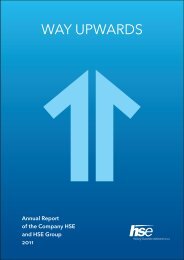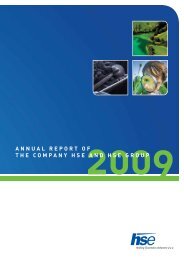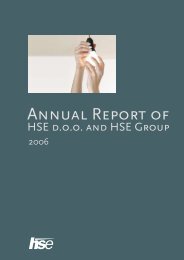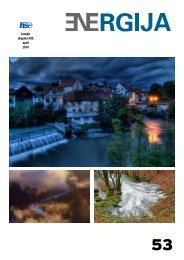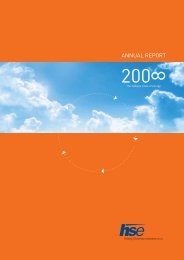Annual report - HSE
Annual report - HSE
Annual report - HSE
You also want an ePaper? Increase the reach of your titles
YUMPU automatically turns print PDFs into web optimized ePapers that Google loves.
4.5.7.11 Contingent liabilities and assets<br />
Contingent liability is:<br />
• a possible liability arising from past events and whose existence is confirmed solely<br />
by the occurrence or non-occurrence of one or more uncertain future events that the<br />
company does not fully control; or<br />
• a present obligation arising from past events, which is not recognised, since it is not<br />
probable that the outflow of resources embodying economic benefits will be required to<br />
settle the obligation or the amount of obligation cannot be reliably measured.<br />
Contingent liabilities include the guarantees granted and parent guarantees.<br />
A contingent asset is a possible asset arising from past events and whose existence is<br />
confirmed solely by the occurrence or non-occurrence of one or more uncertain future<br />
events that the company does not fully control.<br />
Contingent assets comprise the amounts of lawsuits in which the company acts as plaintiff.<br />
The company does not recognise contingent assets and liabilities in the statement of<br />
financial position.<br />
4.5.7.12 Revenue<br />
The sales revenue is recognised at fair value of the received payment of receivables,<br />
namely decreased by discounts. The revenue is disclosed when the buyer assumes all<br />
significant types of risks and benefits related to the ownership of the asset, when there is a<br />
certainty in relation to recoverability of a fee and related costs or possibility of repayment<br />
of products and when the company stops deciding on products sold.<br />
Sales of goods are recognised when the company delivers the products to the client. The<br />
client accepts the products, while the collectability of associated receivables is reasonably<br />
ensured. In case the company has more positive than negative operating foreign exchange<br />
differences, they are recorded as net revenue from the sales of merchandise at net principle.<br />
Sales of services is recognised in the accounting period in which the services are performed<br />
as regards the conclusion of the transaction estimated on the basis of actually performed<br />
service as the proportional portion of all services performed.<br />
Revenue arising from default interests charges and related receivables are recognised<br />
upon occurrence if it is probable that the economic benefits related to transaction will<br />
inflow to the company. On the contrary, default interest charges are recorded as contingent<br />
assets and are recognised in the company’s books of account upon payments. Recording<br />
of default interest is considered individually.<br />
Other operating revenue related operating effects is revenue from the lawsuits won,<br />
reversal of provisions, revenue from default interests, gains arising from sales of fixed<br />
assets, received compensations and contractual penalties and similar revenue.<br />
Financial revenue comprises revenue from investment shares, interest of loans and<br />
deposits granted and revenue from parent guarantees granted. Interest revenue is<br />
recognised upon its occurrence, in the amount of agreed-upon interest rate.<br />
4.5.7.13 Expenses<br />
Expenses are recognised if a decrease in economic benefits in the accounting period gives<br />
rise to a decrease in assets or increase in debt and this decrease can be reliably measured.<br />
Operating expenses are recognised once the merchandise has been sold.<br />
Costs of goods sold includes expenses related to the sales of electricity, trading emission<br />
coupons and dependent costs of electricity. In case the company has more negative than<br />
positive operating foreign exchange differences, they are recorded as costs of goods sold.<br />
Costs of materials are historical costs of materials purchased, namely costs of protection<br />
equipment, small tools, whose useful life does not exceed one year, electricity and fuel,<br />
office material, technical literature and other materials.<br />
<strong>Annual</strong> Report <strong>HSE</strong> 2012<br />
4 Financial Report of the company <strong>HSE</strong><br />
125



